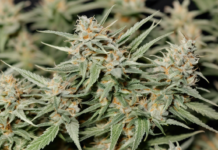Located in Southeast Asia, Thailand is renowned for its rich culture, stunning landscapes, and ancient traditions. It is also a popular destination for wellness retreats and alternative therapies, drawing visitors seeking to heal both their bodies and minds. One such unique healing practice that has gained popularity in recent years is Capcut.
What is Capcut?
Capcut, also known as Gua Sha, is an ancient Chinese healing technique that involves scraping the skin to improve circulation. This practice has been used for centuries in traditional Chinese medicine to treat various ailments and promote overall well-being. In recent years, Capcut has gained popularity worldwide for its ability to alleviate muscle tension, reduce inflammation, and improve skin health.
How Does Capcut Work?
Capcut involves using a tool, typically made of jade or quartz, to scrape the skin in long and smooth strokes. The pressure applied during the scraping motion helps to increase blood flow to the area, promoting healing and reducing pain. The scraping action also helps to release toxins trapped in the muscles, allowing the body to detoxify and heal itself.
Benefits of Capcut:
- Improves circulation: Capcut helps to stimulate blood flow to the skin, muscles, and tissues, promoting healing and reducing inflammation.
- Relieves muscle tension: The scraping action of Capcut helps to release tension in the muscles, promoting relaxation and reducing pain.
- Detoxifies the body: By promoting circulation and lymphatic drainage, Capcut helps the body eliminate toxins and waste products.
- Improves skin health: Capcut can help improve the appearance of the skin by promoting circulation and reducing inflammation.
Using Capcut in Thailand
Thailand is home to many wellness retreats and spas that offer Capcut as part of their healing therapies. Visitors to Thailand can experience the benefits of Capcut through traditional treatments or incorporate it into their daily self-care routine. Here are some tips on how to use Capcut effectively in Thailand:
1. Visit a Wellness Retreat:
Many wellness retreats in Thailand offer traditional healing therapies, including Capcut. These retreats provide a serene environment where visitors can experience the benefits of Capcut as part of a holistic wellness program.
2. Try a Spa Treatment:
Thailand is known for its luxurious spa treatments, many of which incorporate traditional healing techniques like Capcut. Visitors can indulge in a Capcut massage to relax their muscles, improve circulation, and promote overall well-being.
3. Purchase a Capcut Tool:
Visitors to Thailand can purchase a Capcut tool from local markets or wellness stores to use at home. Using a Capcut tool regularly can help improve circulation, reduce muscle tension, and promote healing.
4. Learn from a Local Practitioner:
Thailand is home to many experienced Capcut practitioners who can teach visitors how to use this technique effectively. Learning from a local expert can help visitors experience the full benefits of Capcut.
5. Incorporate Capcut into Your Daily Routine:
By incorporating Capcut into your daily self-care routine, you can experience the benefits of this healing technique regularly. Use the Capcut tool on your skin in gentle strokes to promote circulation, relax your muscles, and improve your overall well-being.
Frequently Asked Questions (FAQs)
1. Is Capcut painful?
- Capcut may cause some discomfort, especially if there is tension or tightness in the muscles. However, it should not be excessively painful.
2. Can Capcut leave marks on the skin?
- Capcut can sometimes leave red marks on the skin, known as “sha.” These marks are temporary and typically fade within a few days.
3. How often should I use Capcut?
- It is recommended to use Capcut 2-3 times a week for best results. However, it is essential to listen to your body and adjust frequency as needed.
4. Can anyone use Capcut?
- Capcut is generally safe for most people. However, it is advisable to consult with a healthcare professional before using Capcut, especially if you have any underlying medical conditions.
5. What are the best body areas to use Capcut on?
- Capcut can be used on various body areas, including the back, shoulders, neck, arms, and legs. Focus on areas where you experience tension or tightness for optimal results.
6. Is Capcut suitable for pregnant women?
- Pregnant women should consult with their healthcare provider before using Capcut, as certain pressure points should be avoided during pregnancy.
7. Can Capcut help with headaches?
- Capcut can help alleviate headaches by promoting relaxation, reducing muscle tension, and improving circulation. Focus on the neck and shoulder areas for headache relief.
8. How long should a Capcut session last?
- A Capcut session can last anywhere from 5 to 20 minutes, depending on the area being treated and the individual’s comfort level.
9. Can Capcut help with cellulite?
- Capcut can help improve the appearance of cellulite by promoting circulation, breaking down fat deposits, and reducing inflammation in the affected areas.
10. Can I use Capcut if I have sensitive skin?
- If you have sensitive skin, it is essential to use a gentle scraping motion and a light pressure when using Capcut to avoid irritation or discomfort.
In conclusion, Capcut is a powerful healing technique that offers a range of benefits for both the body and mind. Whether experienced at a wellness retreat in Thailand or incorporated into a daily self-care routine, Capcut can help promote relaxation, improve circulation, and enhance overall well-being. By learning how to use Capcut effectively and incorporating it into your wellness practices, you can experience the transformative effects of this ancient healing art.









